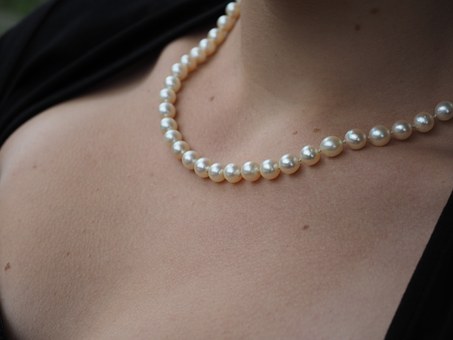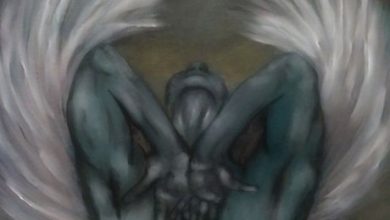
The Necklace by Guy De Maupassant is a smart short story which follows the life of a woman who faces the consequences of trying to impress a society which doesn’t care about her in the first place. This story masterfully depicts the consequences of trying to keep up with the Joneses.
The necklace deals with the themes of class pretensions and yearning. The main character, in her dissatisfaction with her life, ended up losing everything she valued. Through her dishonesty and need to present a false image of herself, she was thrown into a life that paled in comparison to the one she initially hated. In true Maupassant fashion, the sudden twist at the end of the story provides a sudden shock and irony. This story was published in 1884.
The Necklace | Summary
The Necklace is a story about a young woman, “born as if through an error of destiny, into a family of clerks.” She was young, beautiful, and smitten by the world of the rich. She felt tortured by her poverty because she felt that, in reality, she was meant to be a lady of extravagance, for whom elegant dinners and beautiful dresses were an everyday occurrence. She was eaten up with envy any time she visited a rich school friend of hers, and she would spend days wallowing in her disappointment.
Her husband, “a petty clerk in the office of the Board of Education”, had no way to fulfil these desires of hers. However, one evening, he happily showed her that they were invited to a very grand party, which was exactly the type of thing Matilda dreamed of. This, however, backfired, as she knew that she could not present herself in the same way as the rich, and she did not want to be embarrassed.
Her husband, hoping to appease her, asks how much a dress would cost. Matilda, knowing how economical he was, but still trying to get as much money as seemed reasonable, decided that 400 francs would be enough. Her husband gives her the money that he had saved for his hobbies.
Though the party was almost upon them, Matilda was more anxious than excited, because she had no jewellery. There is nothing more humiliating than to have a shabby air in the midst of rich women.” she says. She asks to borrow jewellery from her rich school friend and chose a beautiful string of diamonds.
On the day of the party, she lived her dream, “She was the prettiest of all — elegant, gracious, smiling and full of joy. All the men noticed her, asked her name, and wanted to be presented.”
That night was a victory for her, and when it was time to leave, she wanted to move quickly so that she does not show the rich women that she comes from modest means. She finally reached home and discovered that she had lost the beautiful diamond necklace.
Unwilling to tell her friend, she and her husband exhausted their savings and borrowed money from moneylenders to purchase a dupe. This pushed her further away from her desired life of luxury and into the working class. She worked day in and day out to survive, and no longer felt above menial work. After 10 years, they had managed to repay all the loans. She did not forget the night of the party, though she had gone through many changes since. “She had become a strong, hard woman, the crude woman of the poor household.”
One Sunday, she met her school friend, Mme Forestier, who was still living the life of luxury. As Matilda had finally repaid her debts, she decided to approach her and tell her all about it. Her friend didn’t even recognise Matilda until she introduced herself.
Matilda explained the hardships she had been through over the past 10 years, only to be told that the necklace was never real in the first place, not even worth 500 francs.
The Necklace | Analysis
The characters in this story are well set up from the start. A middle-class woman who wishes to be rich, her middle-class husband who wants to give her what she wants, and her upper-class school friend. The woman, Matilda, lives a life of yearning. She was born beautiful and feels as though her true destiny was to be part of the distinguished.
Her husband, a clerk, was happy with his lot in life. This directly contrasts his wife’s outlook on life. In Matilda’s opinion, he was an economical man, and this would imply that she did not know that he had saved 400 francs to buy himself a gun. He gave up that desire, however, to accommodate Matilda.
It is clear that Matilda was never happy with her lot in life, and was always looking for more. Something more luxurious, more decadent. This is also represented in her asking “Have you nothing more?” to her friend when presented with an array of jewels. She was not happy with what she was given, and asks for more, and takes what she calls a treasure, a string of diamonds.
Though she had an evening of happiness, this was short-lived. She simply created an image of herself that could not be sustained. She would not use her wraps so that the rich women would not know she was not one of them. She was harshly brought back to reality when she and her husband walked for ages to find a carriage to take them back home. This was immediately followed by her realisation that she lost the necklace. Her husband still had to go to work at 10 am, the author is showing us that how much ever she wants to pretend, reality will always catch up.
Still trying to maintain her image, they shell out their entire savings and take questionable loans from several lenders. This takes 10 years to repay. She was forced to give up any dream of being part of the affluent class and ended up a part of the working class. She had no time for these dreams anymore, but she didn’t forget them. Her contentment with life increased, and all representations of envy were gone.
In the end, she was faced with her old desires. The same friend, still part of the life she wanted. Matilda did not turn away, embarrassed, but faced it head-on, as though she was facing herself. She says she is content, and there is no embarrassment portrayed. She lives her life in true reality, only to find out that the life she wanted was only ever an image. The necklace was fake. The luxury was never real.
In the story, she asks herself, where would she have been had she not lost the necklace and pondered on how life changes with such small occurrences. Had she not lost the necklace, she would have still been living a life of longing, never being able to accept herself. She is now content, though on a different plane of life.
The irony is that she never had to give it up at all. She worked for years to make up for losing the necklace, but all of that could have been avoided if she had just been honest. She sacrificed her beauty and her money for no reason. On learning that the necklace was fake, she may spiral back into the same disappointment and despair that she had just escaped from.
The Necklace | About the Author
Guy de Maupassant, or Henri-René-Albert-Guy de Maupassant, was a French author who usually wrote about human lives with a pessimistic view on destiny and social forces. He is best known for his mastery of short story writing, and the twist ending is a characteristic of his style. His magnum opus is ‘Boule de Suif’ which was actually his first published story. He is hailed as the best French short story writer and has influenced the style of several writers after him.
He died on 6 July 1893 in Paris, France


